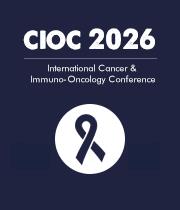Title : Histone lactylation drives oncogenesis and function as a prognostic marker in pancreatic ductal adenocarcinoma
Abstract:
Background: Metabolic reprogramming and epigenetic alterations contribute to the aggressiveness of pancreatic ductal adenocarcinoma (PDAC). Lactate-dependent histone modification is a new type of histone mark, which links glycolysis metabolite to the epigenetic process of lactylation. However, the role of histone lactylation in PDAC remains unclear.
Methods: Western blot and immunohistochemistry were applied to identify the expression of histone lactylation in PDAC. The overall survival (OS) was evaluated using a Kaplan-Meier survival plot. Inhibition of histone lactylation by glycolysis inhibitors or LDHA knockdown elucidated the pivotal role of histone lactylation in the growth and progression of PDAC both in vitro and in vivo. Western blot and functional experiments were employed to identify potential writers and erasers of histone lactylation in PDAC. CUT & Tag and RNA-seq analyses were utilized to identify potential target genes of H3K18 lactylation. The sequencing results were validated through ChIP-qPCR, RT-qPCR and Western blot analyses. Knockdown or overexpression of TTK protein kinase (TTK) or BUB1 mitotic checkpoint serine/threonine kinase (BUB1B) confirmed the significance of these two genes in PDAC. Co-IP assay was conducted to identify the interaction between TTK and lactate dehydrogenase A (LDHA).
Results: Histone lactylation especially H3K18 lactylation (H3K18la) levels are elevated in PDAC, which is associated with poor prognosis. The suppression of glycolytic activity using different kinds of inhibitors or si-LDHA contributes to the anti-tumor effects of PDAC in vitro and in vivo. P300 and HDAC2 are potential writer and eraser respectively of histone lactylation in PDAC cells. Mechanistically, H3K18la is enriched at the promoters and activates the transcription of mitotic checkpoint regulators TTK and BUB1B. Interestingly, TTK and BUB1B could elevate the expression of P300 which in turn increases glycolysis. Moreover, we demonstrate that phosphorylation at tyrosine 239 (Y239) and the activation of LDHA are mediated by TTK, subsequently influencing lactate content and H3K18 lactylation levels.
Conclusions: The glycolysis/H3K18la/TTK&BUB1B positive feedback loop exacerbates dysfunction in PDAC. These findings delivered a new exploration and significant inter-relationship between lactate metabolic reprogramming and epigenetic regulation, which might pave the way toward novel lactylation treatment strategies in PDAC therapy.



